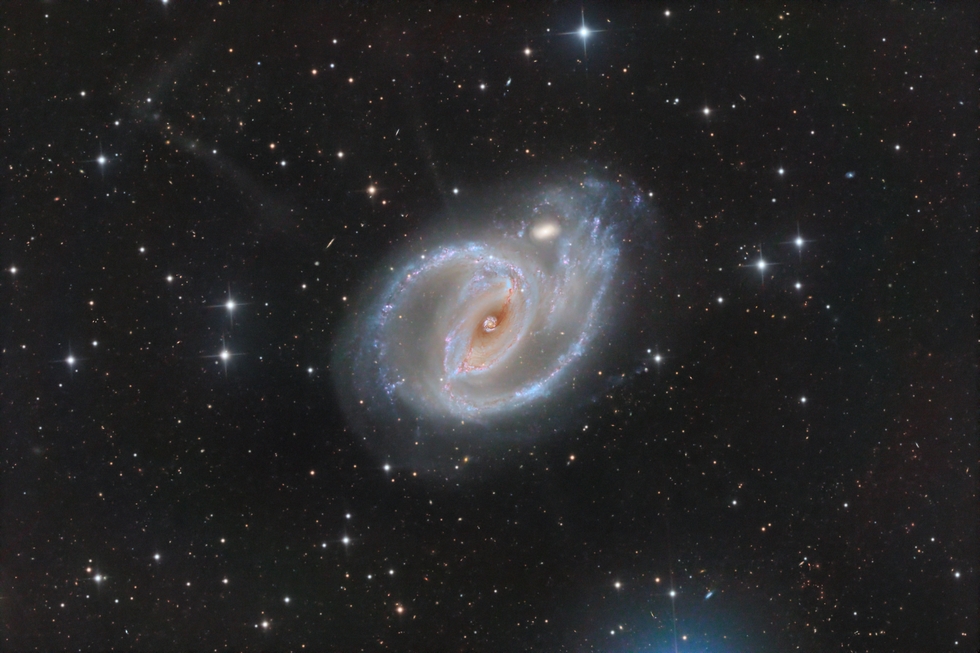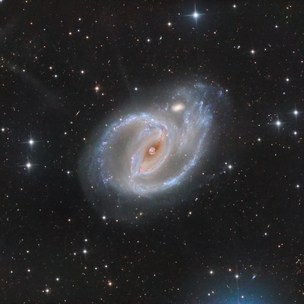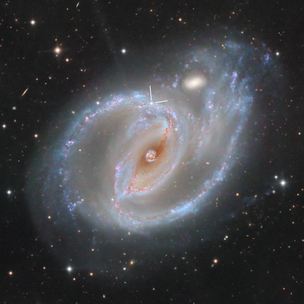NGC 1097 with SN 2023rve
0
17
NGC 1097 with SN 2023rve
NGC 1097 Type II Supernova (2023rve) is a Type II supernova that was discovered on September 8, 2023 by Mohammad Shawkat Odeh (UAE) in the spiral galaxy NGC 1097, located in the constellation Fornax. It is the first supernova to be discovered in NGC 1097 since 1968.
Type II supernovae occur when massive stars (more than eight times the mass of the Sun) collapse at the end of their lives. The collapse triggers a thermonuclear explosion that blows off the star's outer layers, leaving behind a dense neutron star core.
SN 2023rve is a young supernova, and it is still brightening. It is currently the brightest supernova in the sky, and it is expected to reach peak brightness in the next few weeks.
SN 2023rve is located about 11.9 arcseconds west and 127.4 arcseconds north of the center of NGC 1097.
SN 2023rve is a valuable target for astronomers because it will provide insights into the evolution of massive stars and the physics of supernova explosions. Astronomers are using a variety of telescopes to study SN 2023rve, including the Hubble Space Telescope, the James Webb Space Telescope, and the Very Large Telescope.
SN 2023rve is also a good target for amateur astronomers with small telescopes. It is currently visible in the southern hemisphere, and it will become visible in the northern hemisphere in the next few weeks.
Data from telescope live
Type II supernovae occur when massive stars (more than eight times the mass of the Sun) collapse at the end of their lives. The collapse triggers a thermonuclear explosion that blows off the star's outer layers, leaving behind a dense neutron star core.
SN 2023rve is a young supernova, and it is still brightening. It is currently the brightest supernova in the sky, and it is expected to reach peak brightness in the next few weeks.
SN 2023rve is located about 11.9 arcseconds west and 127.4 arcseconds north of the center of NGC 1097.
SN 2023rve is a valuable target for astronomers because it will provide insights into the evolution of massive stars and the physics of supernova explosions. Astronomers are using a variety of telescopes to study SN 2023rve, including the Hubble Space Telescope, the James Webb Space Telescope, and the Very Large Telescope.
SN 2023rve is also a good target for amateur astronomers with small telescopes. It is currently visible in the southern hemisphere, and it will become visible in the northern hemisphere in the next few weeks.
Data from telescope live
SPECIFICATIONS
Telescope
CHI-1-CMOS
Camera
QHY 600M
Location
Río Hurtado, Coquimbo Region, Chile
Date of observation
Bundle
Filters
LRGB
Processing
Pixinsight
Credits
Telescope Live/ Fred Zimmer





